
The Lockheed F-104 Starfighter is an American single-engine, supersonic interceptor which was extensively deployed as a fighter-bomber during the Cold War. Created as a day fighter by Lockheed as one of the "Century Series" of fighter aircraft for the United States Air Force (USAF), it was developed into an all-weather multirole aircraft in the early 1960s and produced by several other nations, seeing widespread service outside the United States.
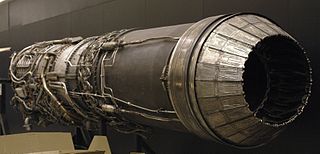
The General Electric J79 is an axial-flow turbojet engine built for use in a variety of fighter and bomber aircraft and a supersonic cruise missile. The J79 was produced by General Electric Aircraft Engines in the United States, and under license by several other companies worldwide. Among its major uses was the Lockheed F-104 Starfighter, Convair B-58 Hustler, McDonnell Douglas F-4 Phantom II, North American A-5 Vigilante and IAI Kfir.
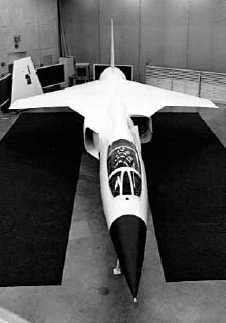
The Lockheed CL-1200 Lancer was a late 1960s company-funded proposal for a fighter aircraft based on the Lockheed F-104 Starfighter. The CL-1200 was conceived and marketed mainly for and to non-US military services, as an export product. As such it would have competed with combat-proven designs like the Dassault Mirage III, McDonnell Douglas F-4 Phantom II, Mikoyan-Gurevich MiG-21, and Northrop F-5E Tiger II. The CL-1200 competed unsuccessfully against proposed fourth generation designs, under the US government's Lightweight Fighter program, which would eventually result in the General Dynamics F-16 and Northrop F-17 Cobra.

A supersonic aircraft is an aircraft capable of supersonic flight, that is, flying faster than the speed of sound. Supersonic aircraft were developed in the second half of the twentieth century. Supersonic aircraft have been used for research and military purposes, but only two supersonic aircraft, the Tupolev Tu-144 and the Concorde, ever entered service for civil use as airliners. Fighter jets are the most common example of supersonic aircraft.

The Polish Aviation Museum is a large museum of historic aircraft and aircraft engines in Kraków, Poland. It is located at the site of the no-longer functional Kraków-Rakowice-Czyżyny Airport. This airfield, established by Austria-Hungary in 1912, is one of the oldest in the world. The museum opened in 1964, after the airfield closed in 1963. It was listed among the world's best aviation museums by CNN.

The Canadair CF-104 Starfighter is a modified version of the Lockheed F-104 Starfighter supersonic fighter aircraft built in Canada by Canadair under licence. It was primarily used as a ground attack aircraft, despite being designed as an interceptor. It served with the Royal Canadian Air Force (RCAF) and later the Canadian Armed Forces (CAF) until it was replaced by the McDonnell Douglas CF-18 Hornet in 1987.

The Szolnoki Repülőmúzeum is a large museum displaying old military and civilian aircraft and aircraft engines in Szolnok, Hungary. It was located next to the "Lt. Ittebei Kiss József" Helicopter Base of the Hungarian Air Force; most of the collection has now moved to premises in the city centre, under the new name of Reptár.

The Aerospace Museum of California is a private non-profit aviation museum located in North Highlands, California, outside of Sacramento, California, on the grounds of the former McClellan Air Force Base.

The Aeritalia F-104S Starfighter was a licensed production Italian version of the Lockheed F-104 Starfighter, which served in the Italian Air Force, and was its mainstay from the late 1960s until the beginning of the 21st century. The F-104S also served in the Turkish Air Force until the mid-1990s. The F-104S was the final development of the Starfighter line.

The Lockheed XF-104 Starfighter was a single-engine, high-performance, supersonic interceptor prototype for a United States Air Force (USAF) series of lightweight and simple fighters. Only two aircraft were built; one aircraft was used primarily for aerodynamic research and the other served as an armament testbed, both aircraft being destroyed in accidents during testing. The XF-104s were forerunners of over 2,500 production Lockheed F-104 Starfighters.
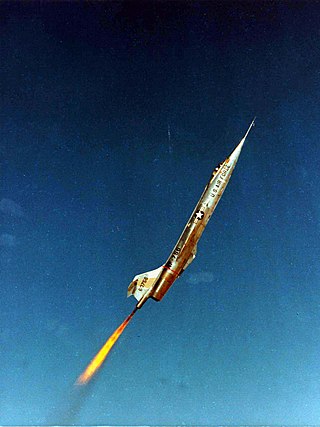
The Lockheed NF-104A is an American mixed-power, high-performance, supersonic aerospace trainer that served as a low-cost astronaut training vehicle for the North American X-15 and projected Boeing X-20 Dyna-Soar programs.

Flugwerft Schleissheim is an aviation museum located in the German town of Oberschleißheim near Munich, it forms part of the Deutsches Museum collection and complements the aviation exhibits on display at the main site. The museum was opened on 18 September 1992. Many aerospace exhibits are on display including fixed-wing aircraft, helicopters and aircraft engines. The main display hangar is a restored glazed building, visitors are able to view exhibits undergoing restoration.

The Grumman F11F-1F Super Tiger is a single-seat fighter aircraft originally developed for the United States Navy (USN). Based on the USN's F-11 Tiger, the F11F-1F did not proceed beyond the two F11F-1F prototypes.

The Northrop N-102 Fang was a fighter aircraft design created by Northrop Corporation and proposed to the United States Air Force in 1953. The Fang was explicitly designed as a ”light” or “lightweight fighter” in direct response to what Northrop saw as the ever-increasing weight, size, complexity, and cost of Western fighter designs. While the Fang was ultimately overlooked in-favor of the Lockheed F-104 Starfighter, Northrop’s interest in the lightweight fighter concept would ultimately come to fruition with the F-5 Freedom Fighter, itself spawning a moderately successful fighter family.

The Flugausstellung Peter Junior, previously the Flugausstellung Hermeskeil, is a private aviation museum in the town of Hermeskeil in the German state of Rhineland-Palatinate.
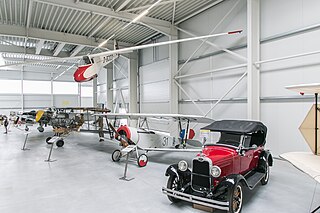
The Museum für Luftfahrt und Technik Wernigerode is an aviation museum located in the German town of Wernigerode near Halberstadt. Many aerospace exhibits are on display including fixed-wing aircraft, helicopters and aircraft engines. The main display is contained within two buildings with some aircraft displayed externally. In addition to the aircraft exhibits a number of cockpit sections and a collection of ejection seats are also held by the museum.

The Aviation Museum Hannover-Laatzen is a permanent exhibition in Laatzen of the history of aviation. 38 airplanes, 800 aircraft models, and more than 30 aircraft engines are displayed on 3,500 m2 (38,000 sq ft).
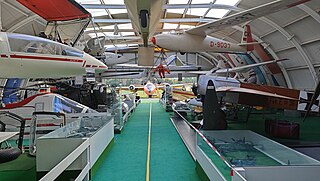
The Internationales Luftfahrt-Museum is an aviation museum located in the German town of Villingen-Schwenningen in Baden-Württemberg. Many aerospace exhibits are on display including fixed-wing aircraft, helicopters and aircraft engines. The main display is contained within one hangar with other aircraft displayed externally on a site covering 13,000 square metres. In addition to the aircraft exhibits a number of aircraft components and a collection of ejection seats are also held by the museum.

Neil Burgess Jr. was a leading American aircraft propulsion engineer and designer. Working at General Electric with Gerhard Neumann, they won the 1958 Collier Trophy for their work on the General Electric J79 turbojet engine which powered the Lockheed F-104 Starfighter.





















